
The holidays and shopping for friends or family with COPD can be difficult. But you know what's more difficult? Living with COPD every day of the year, and especially in the cold winter months!
Gifts can bring a lot of joy to the holiday, but special gifts picked out specifically for your loved ones with chronic respiratory diseases can bring joy that lasts throughout the year! Below are 16 practical Christmas gift ideas that COPD patients may find useful!
{{cta('fa8abc2a-1e88-4fa3-82fd-1cb5b9ed43b2','justifycenter')}}
So, while the gifts laid out in this article are practical and very useful for COPD patients, always remember that COPD patients may want something lighthearted, fun, that brings an element of the holiday spirit.
Exercise Bike
Exercise is an essential part of treating COPD. Exercise gives COPD patients hope for rebuilding strength and enjoying a fuller, more active life.

Pulmonary rehabilitation programs typically combine education, exercise training, nutrition advice and counseling, but for some people pulmonary rehab classes are not an option!
An exercise bike is a great option for low impact exercise that you can do from the comfort of your own home.
Nothing is more important to the person who has COPD than exercise. Exercise ultimately makes it easier for those with COPD to breathe by strengthening muscles, bones, and lungs.
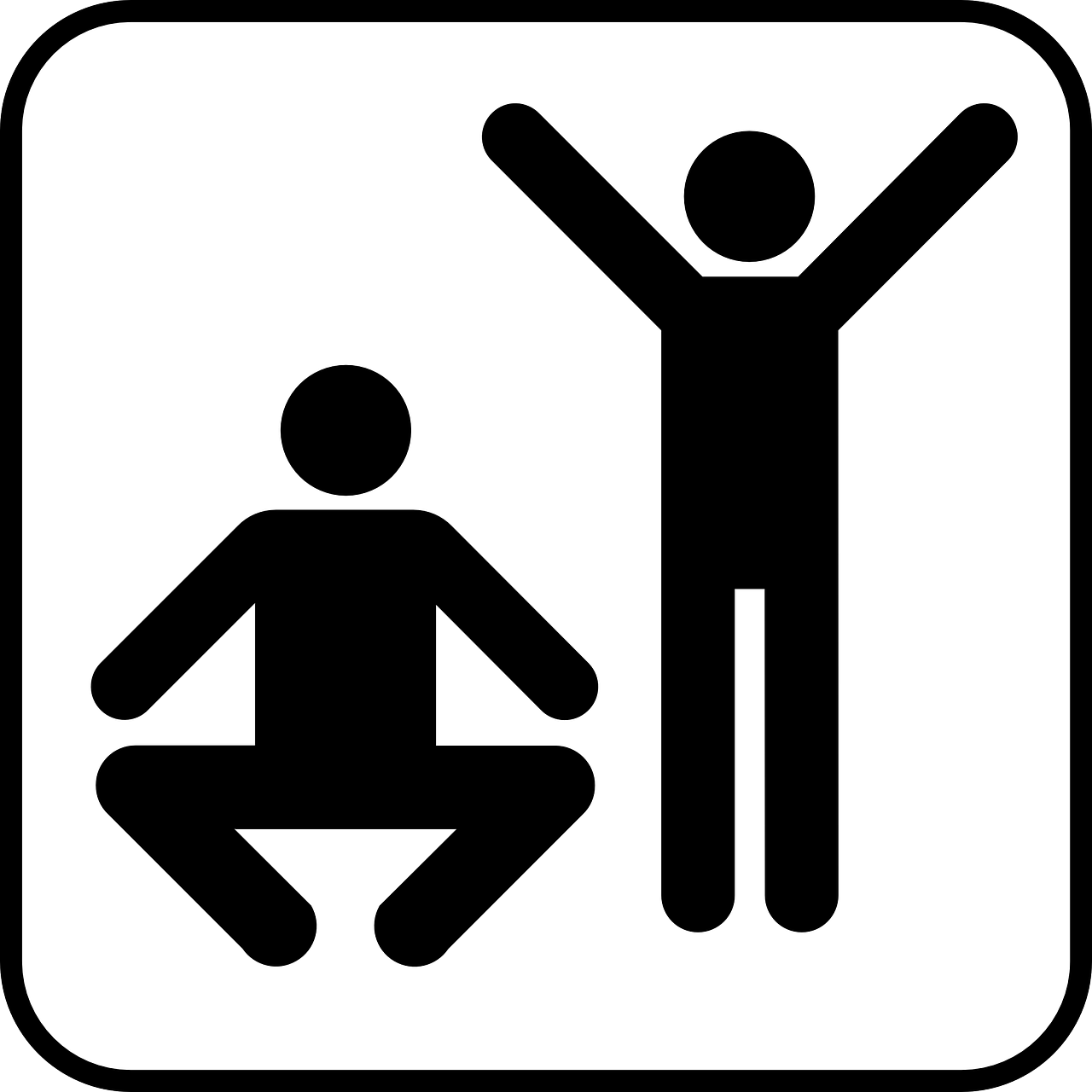
An exercise bike is something that will be valued by your loved one for years to come.
A tip for purchasing an exercise bike for a loved one is to choose a model that has several levels of resistance and a smooth magnetic resistance system so it can meet any COPD patient's needs.
Hat, Scarf and Glove Set

The cold winter months are a challenging time of year for COPD patients who already struggle to get around.
Staying warm is especially important for someone with COP. Breathing in cold air can ignite a bronchospasm and shortness of breath, causing a nasty flare up.
![]()
A scarf, hat and glove set will help your loved ones stay warm when they go outside and reduce the likelihood of them experiencing an exacerbation due to the cold air.
There are face masks designed for people with COPD that you can also buy. They are less fashionable, but offer a ventilation system that warms and moisturizes the cold dry air they are breathing in while outside!
Oxygen Therapy Gifts
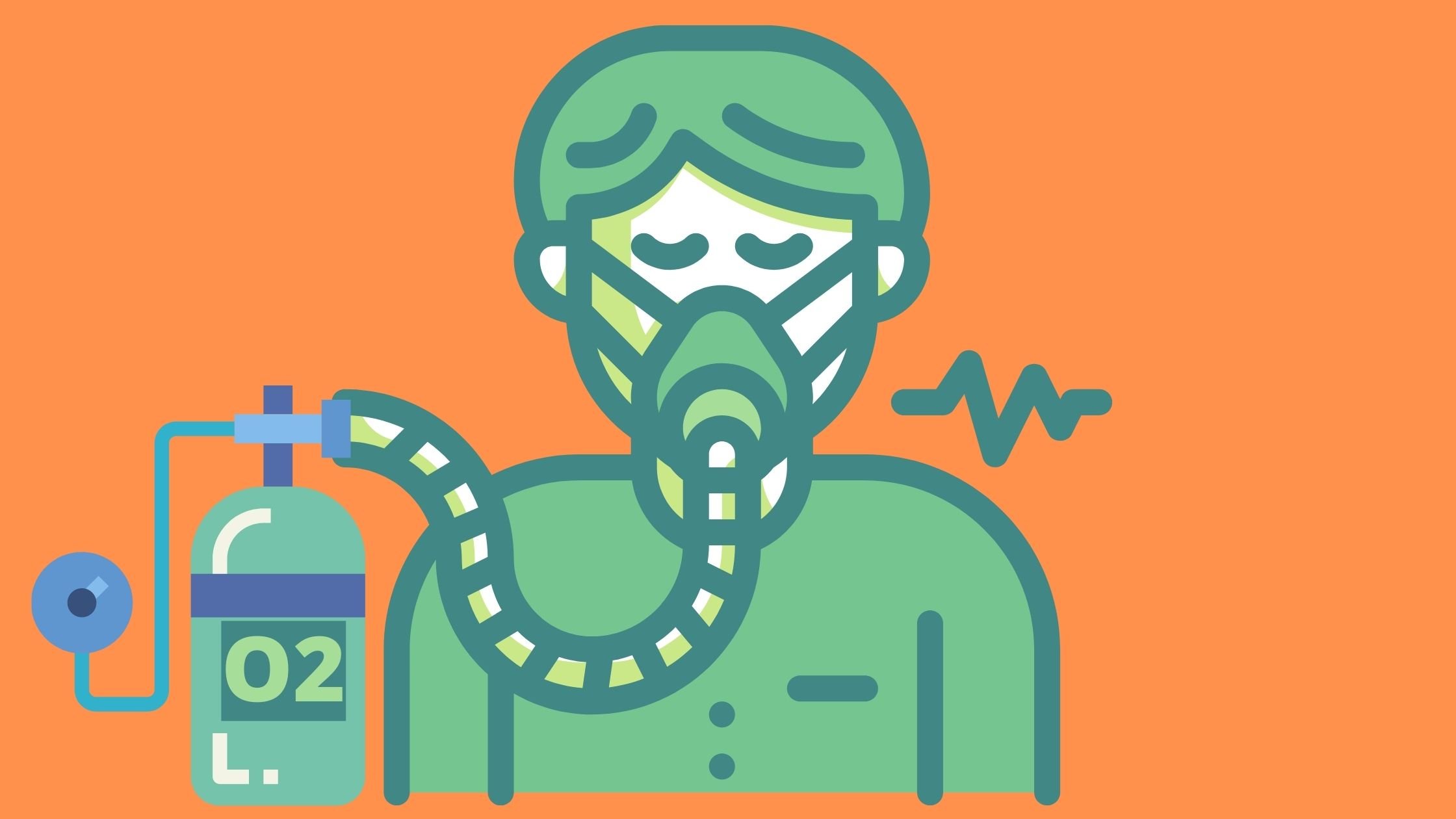
If you are looking for a gift for a love one who uses oxygen therapy here are some ideas:
A New Pulse Flow or Continuous Flow Portable Oxygen Device
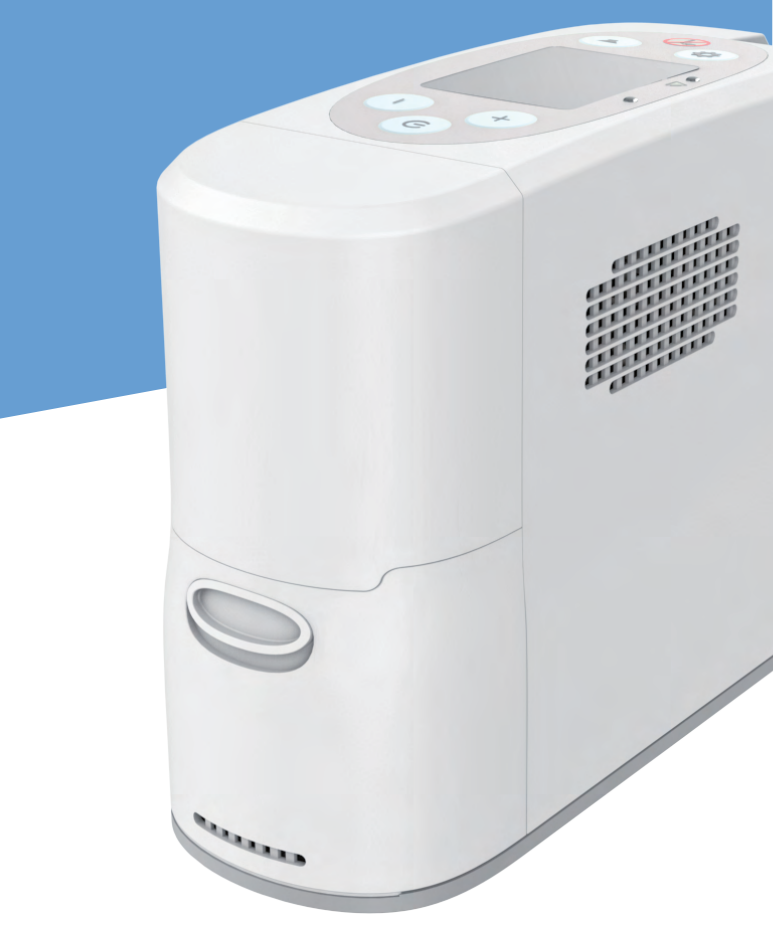
Pulse flow options:
Caire Freestyle Comfort
The Caire Freestyle Comfort is a pulse flow portable oxygen concentrator capable of delivering medical grade oxygen to COPD patients via face or nose cannula.
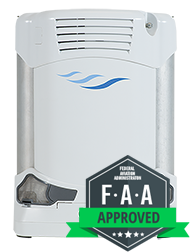
When you order the Freestyle Comfort from LPT Medical you are not only getting the portable oxygen concentrator, it will come with some additional accessories that will help your loved one make the most out of their oxygen therapy device, as well as a 3-year warranty!
Portable oxygen concentrators run off battery power, and the Caire FreeStyle comes with the 8-cell Lithium-Ion rechargeable battery. If you want a more powerful battery, you have the option to get the large Caire FreeStyle 16-cell battery.
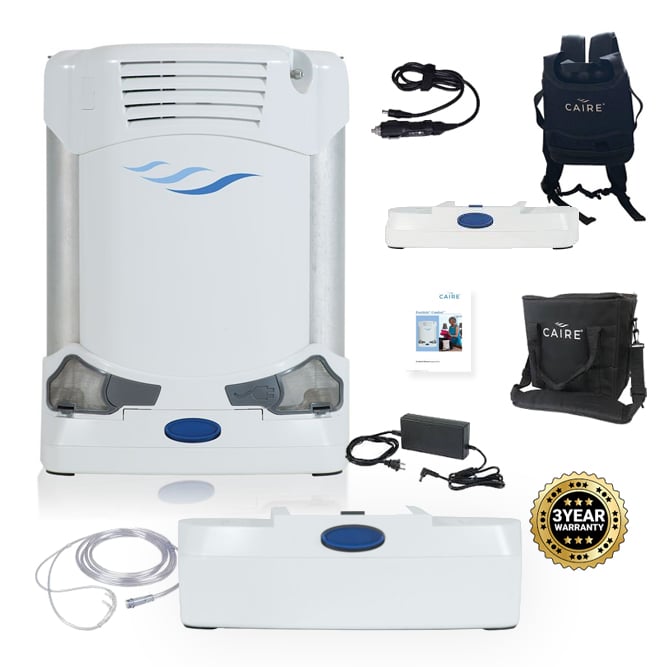
You will also get an AC adapter and the DC car adapter, which allows you to charge your device in a traditional wall outlet, or in the car using the cigarette lighter.
If you want another way to charge your device, you can purchase the Caire Freestyle external battery charger separately. With the external charger, you can keep your batteries charged no matter where you are in the world.

When you buy a Caire FreeStyle Comfort, you will also receive the Caire FreeStyle custom carrying case that comes with a convenient shoulder strap. You can also opt for another carrying method with the Caire Freestyle comfort backpack, this way you have several options to choose from when you carry your device with you.
With the purchase of the Caire FreeStyle Comfort, you will receive:
- 8-Cell Battery
- AC Charging Cable
- DC Charging Cable
- Caire Freestyle Custom Carrying Case
- Tubing
- Filter
- Manual
- 3 year-long warranty
Lifestyle P2
The Lifestyle P2 from Rhythm is one of the smallest and lightest units on the market. At 4.37 pounds, it offers pulse settings 1-5 and gets up to 5 hours of battery life.

Rhythm products, specifically their Lifestyle P2 portable oxygen concentrator, is not only built to keep oxygen users safe, comfortable, and independent, it is also a source of guidance and education.
Lifestyle Mobility Aids exists with a simple mission— to take care of people with medical needs, including those with respiratory issues that need supplemental oxygen to survive.
What Comes With the P2 Rhythm Portable Oxygen Concentrator?
- P2 Rhythm Portable Oxygen Concentrator
- AC Power Supply
- DC Power Supply
- Rechargeable Battery
- Protective Carrying Case
- Shoulder Strap
- Tubing
- Filter
- Manual
- 3 year Warranty
Inogen One G5
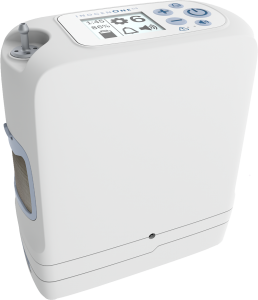
Medical oxygen tanks can be restrictive and oftentimes people sacrifice their freedom to hang out with friends or visit with family on your terms due to their oxygen device.
Help your loved one get back to doing what they love, ditch those cumbersome oxygen tanks and order the brand new Inogen One G5 portable oxygen concentrator.
Instead of worrying about refilling your oxygen tanks, the Inogen One G5 restores your mobility thanks to its portable delivery of pulse flow settings of 1-6, which is powered by a rechargeable lithium-ion battery.
Plus, if you’re familiar with the Inogen family of medical oxygen concentrators, the Inogen One G3 offers incredible battery life in combination with a compact and lightweight design. Well, the Inogen One G5 portable oxygen concentrator is lighter and offers a longer battery life than the Inogen One G3.
What Comes With Your Inogen One G5:
- Inogen One G5 Portable Oxygen Concentrator
- Single Battery
- AC Power Supply
- DC Power Supply
- Custom Carrying Case
- Shoulder Strap
- Tubing
- Manual
- 3 Year Warranty
Continuous flow options:
Respironics SimplyGo
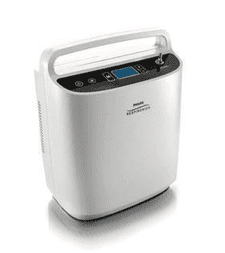
Philips Respironics broke the stereotypical design for continuous flow portable oxygen concentrators when they released the Respironics SimplyGo.
Ever since it was released it has been one of the top continuous flow units on the market! However, its small size isn’t the only reason it’s been one of the top units on the market. Backed by one of the biggest names in the respiratory field, the SimplyGo is as reliable as they come!
If you are looking for a lightweight portable continuous follow device to gift your loved one for the holiday call 1+(800)-946-1201!

What Comes With Your SimplyGo?
- Respironics SimplyGo Portable Oxygen Concentrator
- 1x Battery
- AC Power Supply
- DC Power Supply
- Custom Carrying Case
- Padded Shoulder Strap
- Padded Handle Strap
- Travel Cart
- Accessory Bag
- Tubing
- Manual
- 3 Year Warranty
SeQual Eclipse 5
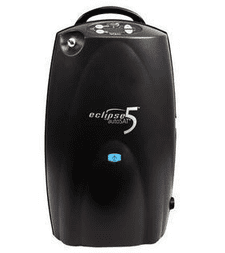
The SeQual Eclipse 5 is the 4th generation model in SeQual’s extremely popular Eclipse line of concentrators.
In fact, the Eclipse 5 is one of the best selling and most reliable continuous flow portable oxygen concentrators on the market. It offers the highest oxygen output on the market, gets good battery life, and it was also designed for the US Military.
What Comes With Your Eclipse 5?
- SeQual Eclipse 5 Portable Oxygen Concentrator
- 1x Battery
- AC Power Supply
- DC Power Supply
- Travel Cart
- Accessory Bag
- Tubing
- Filter
- Manual
- 3 Year Warranty

Other COPD Gift Ideas
FDA Approved Pulse Oximetry Monitor
![]()
Having a FDA approved pulse oximetry monitor indicates whether or not you are getting enough oxygen.The large, easy to read LED display and accommodates fingers of all sizes, and is each to bring anywhere due to its compact size.
Blood Pressure Monitor
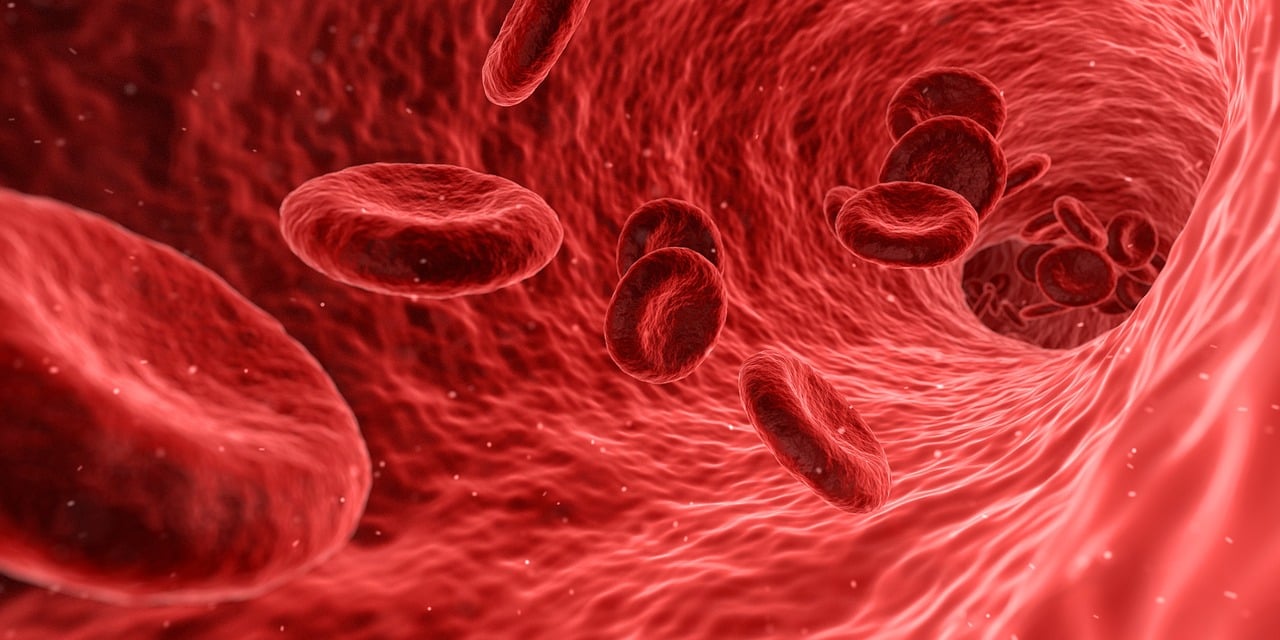
A blood pressure monitor is an essential piece of a COPD management kit! Many people with COPD also struggle with other complications and may take a variety of medications. Maintaining healthy blood pressure is an essential part of disease management.
Blood Pressure Monitor can also display an automatic alert if an irregular heartbeat is detected and the ability to remember the last 100 BP readings. All great safety features that help to better understand what the body is doing and how it functions in certain situations.
Nebulizer Compressor Kit
A nebulizer administers medication directly into the COPD patient's airways, helping them breathe easier.
Some COPD patients are lucky enough to have insurance that pays for their nebulizers, but this is not always the case and many are unable to afford one.
If your loved one does not have a nebulizer compressor kit, it is a great gift that keeps on giving.
Custom carrying backpack for the Inogen One G5
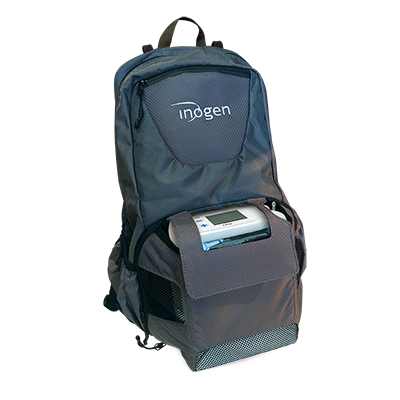
A custom carry backpack is just the ticket your loved one needs to live a more active and independent lifestyle.
This backpack is lightweight and durable, this one can be used with almost any compact portable oxygen concentrator but it fits the One G5 perfectly. It is perfect for COPD patients who like to travel and be active.
COPD for Dummies
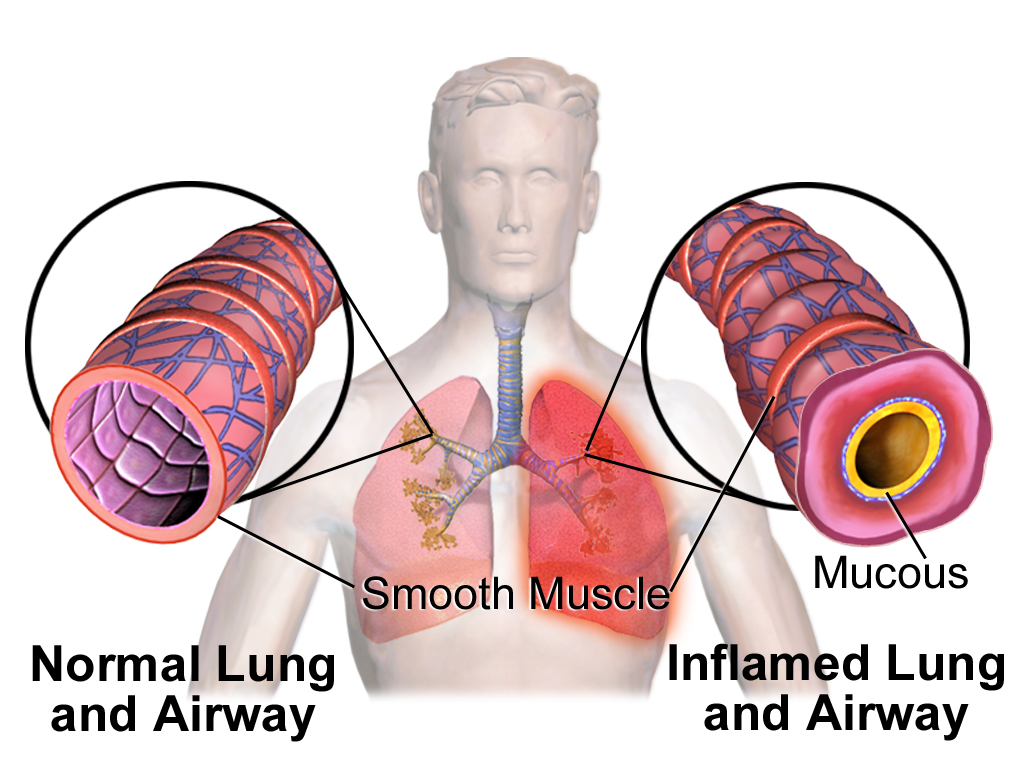
COPD for Dummies or any other resource that helps explain COPD is a great gift that help educate the family on COPD so everyone is capable of lending a helping hand, but also so that everyone can understand the disease and its toll it take on those diagnosed with it
The book includes the most basic information on COPD symptoms, diagnosis, causes, treatment, and how to cope with COPD.
This may be a nice gift for those who were recently diagnosed with COPD.
Overview
![]()
Make the holidays extra special this season with gifts for people in your life with COPD! Buying them gifts that are practical and useful for disease management can help them all year around become more independent and healthier!
If you are interested in the process of buying a portable oxygen concentrator or accessories to go with their portable oxygen concentrator simply call 1+(800)-946-1201
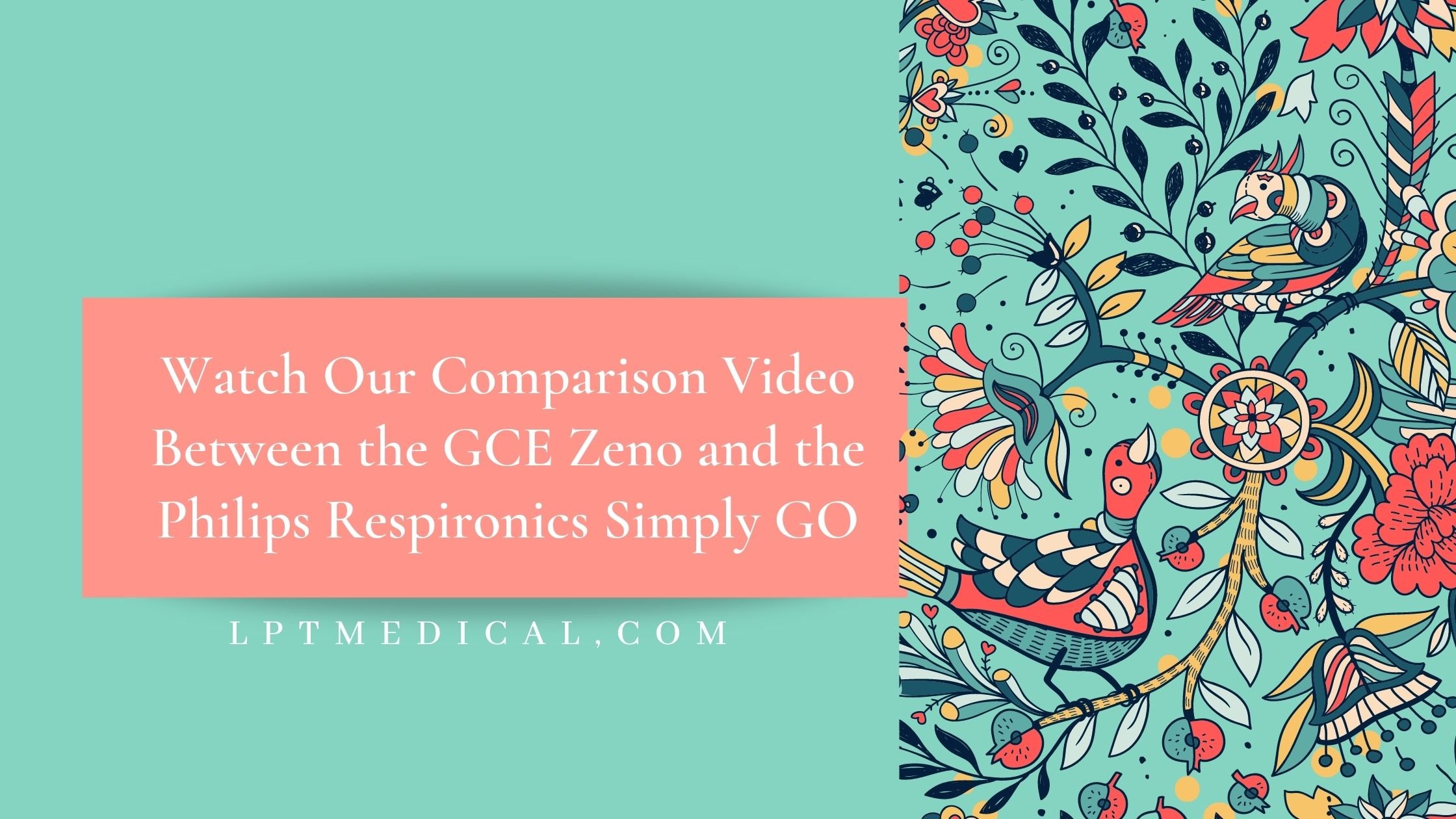
We created a comprehensive guide into the similarities and differences between the GCE Zeno and the Respironics Simply go portable oxygen concentrators. We also made a video for you to watch that takes you through everything you need to know about these two portable oxygen concentrators.
{{cta('fa8abc2a-1e88-4fa3-82fd-1cb5b9ed43b2','justifycenter')}}
If you are a long time oxygen patient or were recently given a prescription to be on supplemental oxygen, and you are in the market for a continuous flow portable, don’t miss out on watching this video!
Both of these devices are great options for people who need continuous flow oxygen concentrators. We are comparing these two devices so that you can decide for yourself which device has the features you want and need in an oxygen device.
Similarities of the GCe Zeno and the SimplyGo \
While there are a few notable differences between the GCE Zeno and the Respironics SimplyGo, they also have a lot of similarities!

Similar Flow Rates
Both of the GCE Zeno and the Respironics SimplyGo devices can go up to pulse flow settings 1-6 and continuous flow settings 0.5-2.0 LPM. So this device can fulfill oxygen patients' needs across the spectrum.
Because theses oxygen devices are continuous and pulse flow devices, you can hook up these devices to your BiPap machines and use them while you sleep!
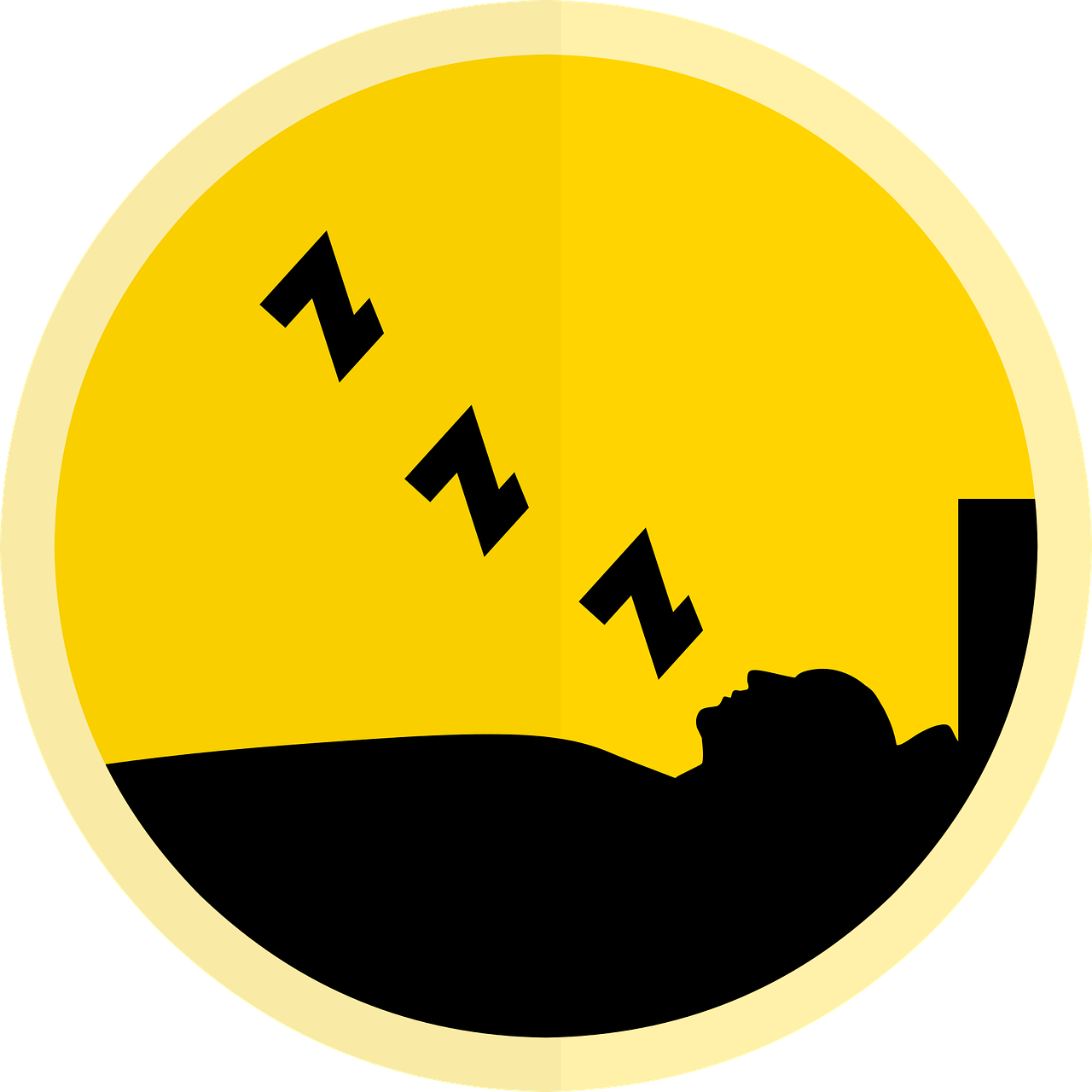
Both are FAA Approved
Both of these devices, and all of the devices LPT Medical carries, are FAA approved, meaning you can carry them on a plane with you, and use your oxygen device while you travel!
This is a huge benefit to owning a portable oxygen concentrator compared to using oxygen tanks and canisters.
All you need is an extra oxygen device battery to bring along with you for the duration of your flight, and also be sure you let your airline know you are traveling with oxygen. They may have a few requirements and checkpoints you have to go through to make sure you are safe during your flight!
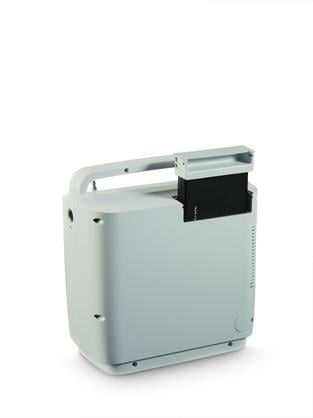
Read this blog linked in blue to learn about traveling with oxygen in 2021!
3 Year Warranty
Both devices and every new device LPT Medical sells comes with a 3 year warranty on the machine itself, and a 1 year warranty comes with all of the oxygen accessories!
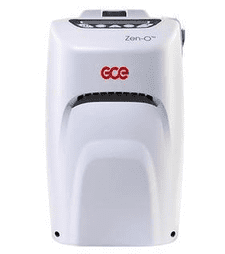
Both the GCE Zeno and the Respironics SimplyGo are super reliable oxygen machines, yet, things happen! Having a company like LPT Medical ready to assist you with any problem you have with your oxygen device, especially in the first three years, will come in handy!
Differences between the GCE Zeno and the SimplyGo
{{cta('43b79c5e-6bd6-4f02-ac27-2d038d20c146','justifycenter')}}
Weight and Size Differences
The SimplyGo is a lightest continuous flow oxygen device you can buy, it weighs just under 10 pounds, which is not a lot for continuous flow devices. It is also very compact and sleek. It is able to fit nicely under the seat in front of you while you fly or in the space by your feet in the car. It doesn’t take up much room in your home, and you will easily be capable of maneuvering the device around on the cart it comes with!
The Respironics SimplyGo’s dimensions are 10” H x 6” D x 11.5” W.
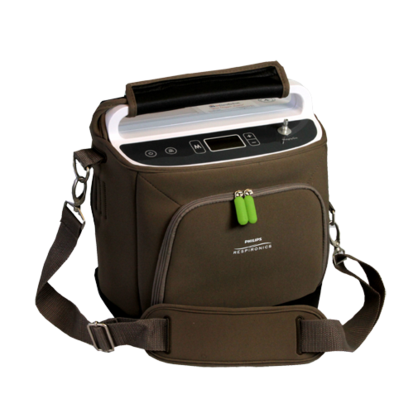
The GCE Zeno comes in a close second, and weighs 10 pounds, it is not a huge difference from the SimplyGo, but it is worth noting. The GCE Zeno stands at 12.3” H x 6.6” D x 8.3” W. So it is slightly taller than the SimplyGo yet it is not as wide!
Battery Life
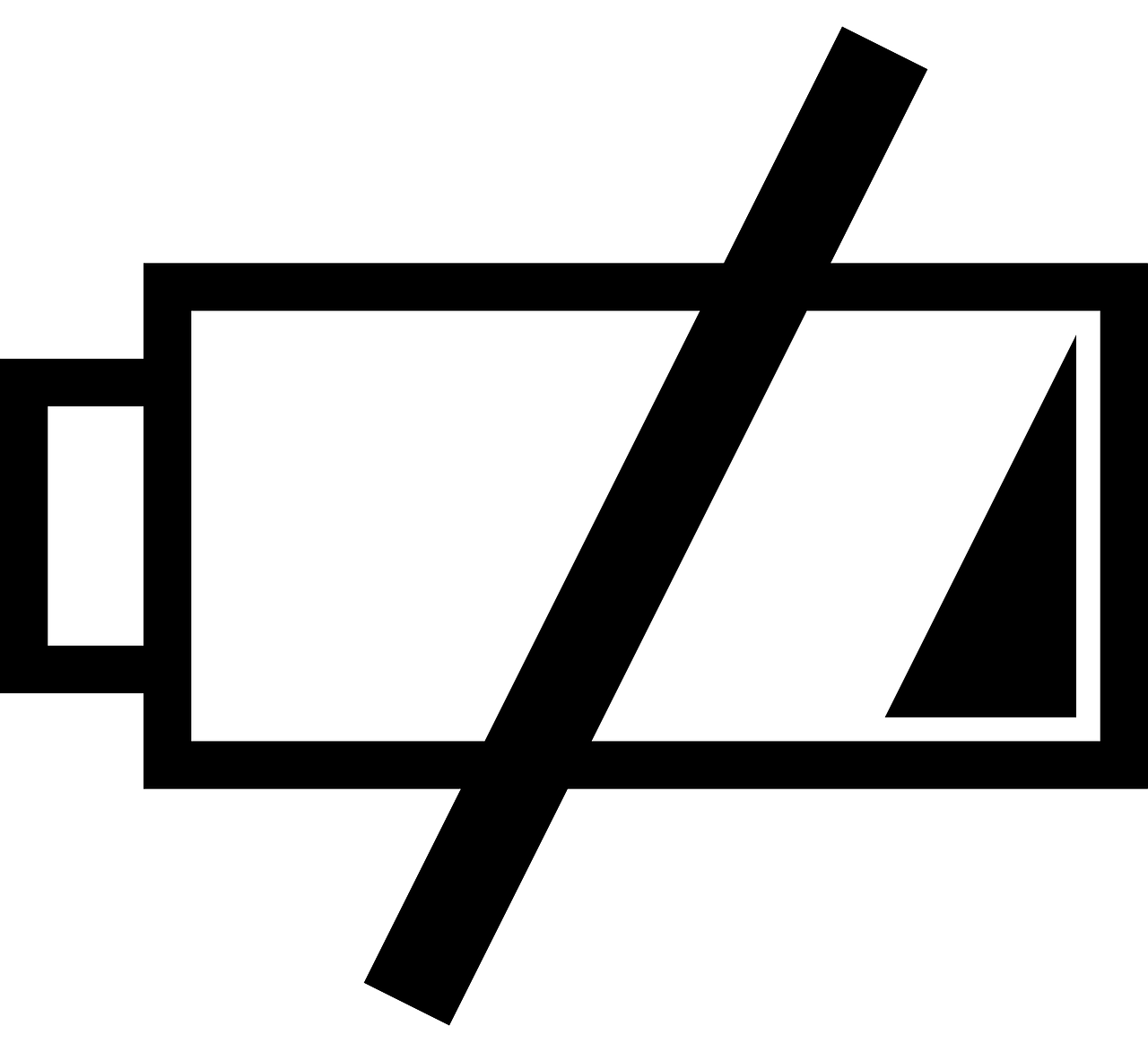
The GCE Zeno shines bright with outstanding battery life, you can get up to 8 hours of battery life when the device is set to a pulse flow setting 2, and up to 1.5 Hours of battery life when it is set to continuous flow setting 2 LPM.
The Respironics SimplyGo is still known for being small but mighty, and it can operate for up to 6 Hours on a pulse flow setting of 2, and about 1.8 hours on a continuous flow setting of 2.
{{cta('b59df0c1-c4de-47a8-8e1c-0d33d4b414aa','justifycenter')}}
Keep in mind that you can use these devices while they are charging! So when you are resting at home, you can have the device plugged in and have it fully charged before you go to the grocery store, out to eat, or to run any errands.
Overview
Both of these devices will be able to give you the oxygen you need. However, depending on your lifestyle and other factors, one may be better for you than the other. Talk through this decision with an experienced respiratory specialist at LPT Medical, you can reach us at 1(800)-946-1201!
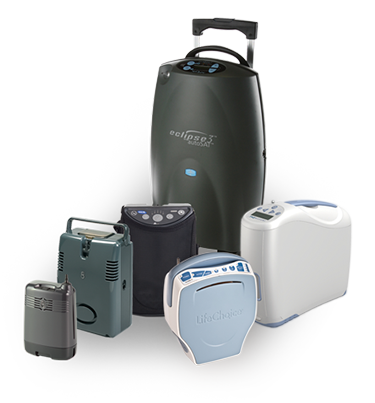
Here at LPT Medical, our goal is to get a portable oxygen concentrator in the hands of anyone who needs one. While oxygen tanks get the job done, we strongly believe that having a portable, lightweight oxygen device can significantly improve the lives of COPD patients around the world by empowering them with more freedom and ease of use than they ever thought possible. However, before we can recommend an oxygen concentrator to you, we need to learn a little bit about your condition, lifestyle, budget, and long-term goals. Reach out to our respiratory specialists at 1-888-416-3855 or email us at info@lptmedical.com to get started.
{{cta('b59df0c1-c4de-47a8-8e1c-0d33d4b414aa','justifycenter')}}
In this post, we’re going to be looking at the Oxlife Independence. This is a continuous flow portable oxygen concentrator manufactured by the industry-leading experts over at O2 Concepts. If you recall from last month, we reviewed the Oxlife Freedom which is essentially the pulse dose version of the Oxlife Independence. They’re built on a similar architectural design, so you can expect the same power and reliability from the Independence. Just remember that it is a continuous flow device so it will be a little heavier and bulkier than its pulse dose counterpart.
If you want to see a full unboxing and review of the Oxlife Independence portable oxygen concentrator, watch the video above. If you’d like more detailed information on the unit, continue reading below.
Highest Oxygen Output in its Class
One of the concerns many oxygen patients have when they upgrade to an oxygen concentrator is whether or not they will be able to receive the oxygen they need to stay healthy. After all, everyone has different oxygen needs whether they’ve just been prescribed oxygen or they’ve been on oxygen for many years. As a result, this concern is well placed. Not all concentrators will work for every oxygen patient, so you should be careful before making any decisions.
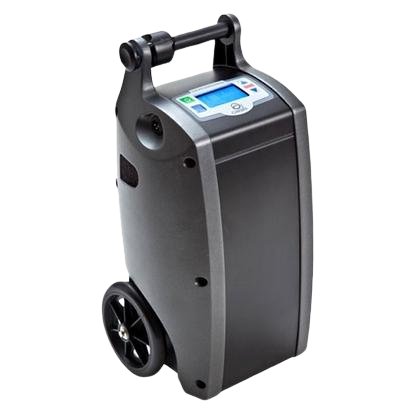
With that being said, the Oxlife Independence is on par or better than other oxygen concentrators in its class when it comes to oxygen output. On its maximum setting, the Independence puts out 3.0 liters per minute (LPM) of oxygen. And it can go up to a maximum pulse dose setting of 6 which exceeds that of the leading portable oxygen concentrator on the market, the Caire FreeStyle Comfort. You can switch between pulse dose and continuous flow on demand, but it’s important to speak with your doctor first who can tell you which setting is best for you.
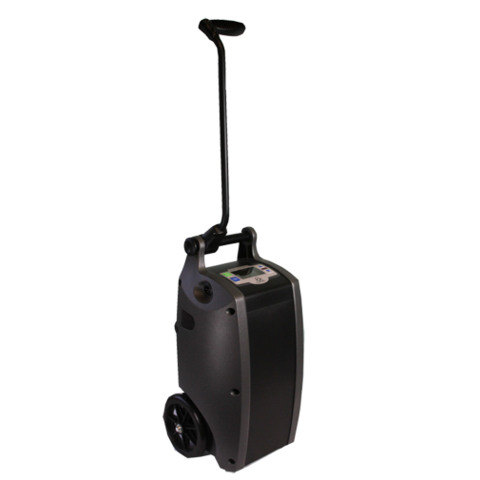
The great thing about having such a high oxygen output is that it affords more oxygen patients to experience the benefit of portable oxygen concentrators. Now, even patients with high oxygen demands are able to travel freely whether it’s by car, bus, or plane. You’ll also have the flexibility to adjust your oxygen flow up or down depending on what you’re doing. For example, if you’re sedentary, you may want to reduce your oxygen flow rate; whereas if you’re exercising, you may want to increase your oxygen flow rate.
Built for Ease of Use on the Go
Something that goes hand-in-hand with portability is ease of use. When you’re out of the house, whether you’re out for a walk or on a trip across the country, the last thing you want is to deal with is a complex or poorly designed electronic device. The experts at O2 Concepts recognized this need and as a result, they focused a lot of time and energy into making the Oxlife Independence simple and easy to use.
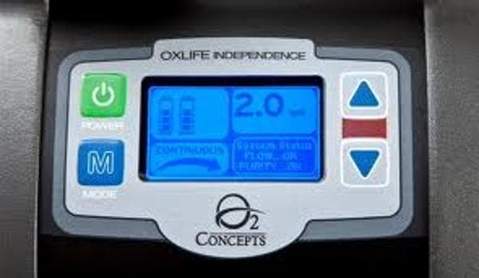
The first thing that you’ll notice about the Oxlife Independence is that it has a sleek design. The all-black matte finish means that you won’t notice any scuff marks or fingerprints. However, despite this, you should still take care to clean it regularly to prevent it from collecting germs and bacteria. Be sure to follow the cleaning instructions listed in the user manual to prevent damage to the unit.
{{cta('43b79c5e-6bd6-4f02-ac27-2d038d20c146','justifycenter')}}
There are many other quality-of-life design choices that were built into the Oxlife Independence. For example, batteries are replaced via the back of the unit rather than having an internal battery or a battery that’s inserted into the bottom of the unit. This makes it very easy to swap out battery packs on the move. Since it holds two batteries, you can even swap them out individually while the unit is still powered on meaning there is no downtime in your oxygen delivery.
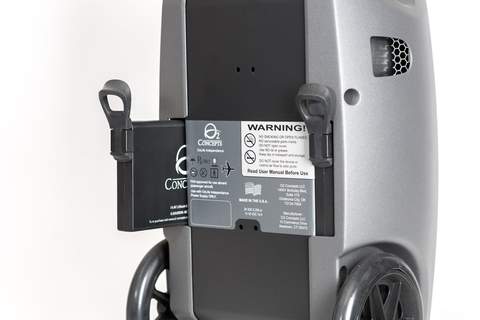
Just like the Oxlife Freedom, the interface on the Oxlife Independence is intuitive. There are only four buttons on the interface. One to turn the device on and off; one to switch between continuous and pulse flow; and two for adjusting the flow rate. That’s it! There’s no need to spend hours sifting through the user manual just to figure out what everything does. Most people will have no problem using their concentrator straight out of the box.
One of the First “Smart” Oxygen Concentrators
Chances are, you’ve probably heard the term “smart” technology before. This is a relatively new term but it refers to technology that helps us stay connected and is constantly learning and improving our experience. Smartphones, for example, don’t just make calls and send texts. They’re all-in-one tools that can help us improve every aspect of our lives whether it’s our fitness routine, diet, or enabling us to stay connected with people around the world.

The Oxlife Independence uses something called Dynamic Network Analysis (DNA) technology which we referenced in our post about the Oxlife Freedom. DNA is a type of “smart” technology that allows oxygen patients to stay connected with their healthcare providers. The benefit of this is that they will be able to ensure that you are complying with your oxygen treatment plan and they can help you troubleshoot any problems that you are having. In other words, it adds a whole new level of security to your medical oxygen delivery.

According to O2 Concepts, DNA links all Oxlife Independence devices to a secure proprietary network. Your oxygen provider can monitor your oxygen usage to ensure compliance with your prescription, monitor the state of your equipment, and schedule routine equipment maintenance to avoid costly repairs and equipment downtime. And the best part of all of this is that it is completely optional. You don’t need to feel like you’re being forced to use this added feature if you do not want or need it.
5-Year Product Warranty
Another major concern oxygen patients have when upgrading to an oxygen concentrator is that they will be less reliable than their oxygen tanks. While concentrators like the Oxlife Independence are built with complex electronic components, the important thing to remember is that your device is backed by a 5-year warranty. Most oxygen concentrators only come with a 3-year warranty, so this goes to show that O2 Concepts puts a lot of faith in their products and their ability to operate for many years without issue. What this means for you is that you can go about your day with peace of mind that if anything goes wrong, you will be covered.
.jpg)
Conclusion
O2 Concepts is a brand that’s been praised for the power and reliability of its oxygen concentrators and the Oxlife Independence is no exception. With up to 3.0 LPM of continuous flow oxygen and six different pulse dose settings to choose from, you’ll have plenty of flexibility to adjust your oxygen delivery depending on your level of activity. From top to bottom, the Independence was designed to be easy and comfortable to use while away from home so that you don’t have to constantly stop what you’re doing to consult the user manual.
{{cta('fa8abc2a-1e88-4fa3-82fd-1cb5b9ed43b2','justifycenter')}}
Since the Oxlife Independence doesn’t hold any compressed oxygen like a traditional oxygen tank or liquid oxygen tank, it’s approved by the Federal Aviation Administration (FAA) for in-flight use. You’ll be able to take this concentrator on any commercial aircraft within the country. Just be sure to contact your airline well in advance to see what their restrictions are. Most airlines require you to carry at least 1 ½ times the duration of your flight in batteries to account for any delays.
We will gladly provide you with an Oxlife Independence if you have been prescribed oxygen by your doctor. However, we also want to make sure that it’s the right device for your medical needs and your lifestyle. Give our oxygen concentrator specialists a call and we’ll walk you through the whole process from choosing an oxygen device to presenting you with your buying options and even helping you to receive financial compensation through Medicare. You can reach out to us either by phone or email.
Oxlife Independence Specs
|
Weight |
19.4 Pounds |
|
Dimensions |
20.2” H x 10.9” W x 8” D |
|
Flow Rate |
Continuous Flow Settings 0.5-3.0 LPM Pulse Flow Settings 0.5-6.0 |
|
Battery Life |
Continuous Flow Up To 2.5 Hours Pulse Flow Up To 5.75 Hours |
|
Power |
100-240 VAC, 50/60 Hz; 12-19 VDC |
|
FAA Approved |
Yes |
|
Warranty |
5 Years |
If you tuned into our blog last month, you probably saw our unboxing and review video for the GCE Zen-O Lite. This machine is one of the top-selling pulse dose portable oxygen concentrators on the market weighing in at under 6 pounds and providing oxygen patients with up to 1,050 milliliters of oxygen per minute (ml/min of O2). The Zen-O Lite is ideal for people who want to be able to get out of the house and enjoy their freedom while still receiving the medical oxygen they need to stay healthy.
{{cta('b59df0c1-c4de-47a8-8e1c-0d33d4b414aa','justifycenter')}}
On the other hand, if your doctor has prescribed you continuous flow oxygen, you’re going to need either a stationary oxygen concentrator or a continuous flow portable oxygen concentrator. In the video above, you’ll see us unbox the GCE Zen-O continuous flow portable oxygen concentrator and you’ll learn about its specs. If the Zen-O Lite caught your eye but doesn’t provide you with enough oxygen, read on as we take a look at some of the benefits of the GCE Zen-O. In the meantime, if you have any questions about supplemental oxygen therapy or oxygen devices, please reach out to our specialists either by phone or email.
More Freedom for More Oxygen Patients
One of the struggles that most oxygen patients have faced is maintaining their freedom and independence while they are on oxygen. While oxygen tanks have provided them with a reliable source of oxygen for many decades, they’re simply too heavy and bulky to be practical in day-to-day life. Even if you use a rolling cart to alleviate some of the weight, you still have to deal with the tank potentially getting caught on something or bumping into someone as you’re navigating crowded areas.

Liquid oxygen tanks were a huge improvement over traditional oxygen tanks in that they were much lighter and smaller. It was now possible to carry an oxygen device on your shoulder that was reliable. However, these tanks still had several glaring issues with them. The units themselves were costly to buy and they were even more expensive to refill week after week. As a result, many people had to rule out liquid oxygen tanks as an option.
The thing that’s unique about continuous flow portable oxygen concentrators like the GCE Zen-O is that it provides oxygen patients with the versatility of traditional oxygen tanks and liquid oxygen tanks but it rules out many of the downsides that they have. For example, the GCE Zen-O does not need to be refilled like an oxygen tank, you simply need to have access to either a wall outlet or a car outlet where you can recharge the batteries. This eliminates the hassle of having to stop what you’re doing and run home or to your nearest oxygen company to have your device refilled.
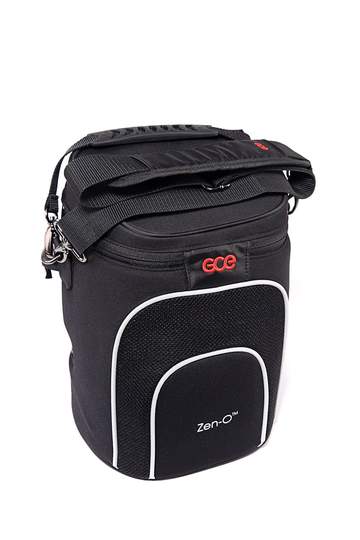
Another benefit of the GCE Zen-O is that it provides both continuous flow and pulse dose oxygen delivery in one unit. This differs from oxygen tanks which require something called an oxygen conserving device (oxygen conserver) which helps you extend the duration of your oxygen supply. As an oxygen patient, this just adds one more thing that you have to worry about when you should be out enjoying your life.
One of the Lightest Concentrators of its Kind
Weight is a major factor to consider when it comes to choosing an oxygen device. Generally speaking, most people are not satisfied with the weight of their oxygen device, because the more you carry, the more energy you exert, and thus, you’ll need more oxygen in order to compensate. This is a vicious cycle and it’s one of the main reasons many people choose to simply stay home to avoid the hassle of using medical oxygen on the go.
Fortunately, the experts at GCE have worked hard to ensure their concentrators are both lightweight and provide patients with the oxygen they need to stay healthy. The GCE Zen-O weighs in at just 10 pounds making it the lightest continuous flow portable oxygen concentrator on the market (alongside the Respironics SimplyGo). Despite the low weight, this concentrator provides users with between 0.5 and 2.0 liters of oxygen per minute (LPM) and pulse dose settings 1 through 6.

The GCE Zen-O is one of the few continuous flow concentrators that can be carried on your shoulder comfortably. However, many people still prefer to wheel their Zen-O rather than carry it. This is why every package sold comes with both a custom carrying case with a padded shoulder strap, in addition to a travel cart that does all the heavy lifting for you. Be sure to assess the situation and choose whichever method is best for you.
A Breeze to Operate
In this day and age, ease of use is a must-have for any electronic device. You likely already have a cell phone, computer, and other electronic devices, so trying to keep them all in order and remember how each one works can be really challenging. Luckily, GCE designed the Zen-O to be as simple and streamlined as possible. There are only six buttons on the interface and they are each clearly marked with a symbol so that you know what each one does.
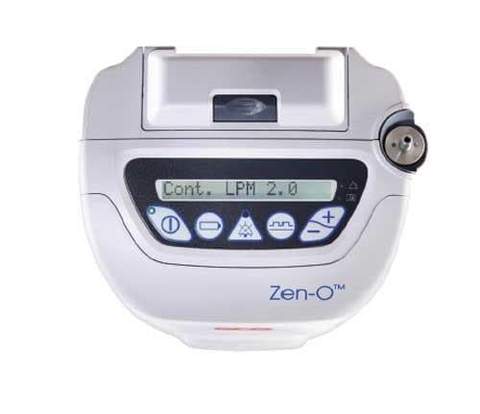
With the six buttons on the interface, you’ll be able to turn the device on and off, display the battery life, mute or unmute alarms, switch between continuous flow and pulse dose, and adjust your flow setting up or down. The battery is installed via the top of the unit so you won’t have to stop and flip your oxygen machine over just to get the battery out. Finally, the oxygen output is located on the top of the unit. This is where you will insert the oxygen tubing.
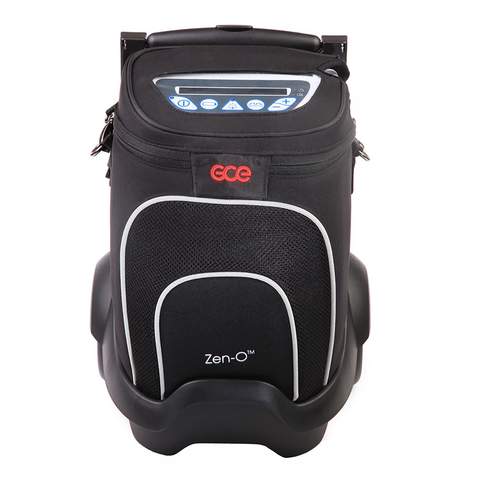
It’s not just the oxygen machine itself that’s easy to use, the accessories it comes with also provide the same ease of use. The custom carrying case which comes with the device, for example, is designed so that you can fully operate your concentrator without removing it from the case. This means you’ll have access to the user interface, the oxygen output port, and the charging port. It also has an extendable handle so that you can either roll your concentrator around or wear it on your shoulder or back.
Conclusion
Whether you have COPD, pulmonary fibrosis, or another respiratory condition, your oxygen device is your lifeline. As such, you need an oxygen machine that both matches your lifestyle and meets your oxygen needs as prescribed by your doctor. While the GCE Zen-O is a great choice if you need a continuous flow portable oxygen concentrator, we highly recommend speaking with one of our oxygen concentrator specialists before making any decisions.
{{cta('fa8abc2a-1e88-4fa3-82fd-1cb5b9ed43b2','justifycenter')}}
When you reach out to us here at LPT Medical, we’ll take the time to understand your situation and answer any questions you may have. Then, we’ll apply our knowledge of oxygen therapy to find you the right oxygen concentrator for your needs. But that’s not all. We will also walk you through your buying options like new, used, or refurbished concentrators, and financing options to make your payments more manageable. If you don’t have the necessary paperwork to purchase an oxygen concentrator, we’ll reach out to your doctor and handle it for you. Give us a call or send us an email today to get started.
GCE Zen-O Specs
|
Weight |
10 Pounds |
|
Dimensions |
12.3” H x 8.3” W x 6.6” D |
|
Flow Rate |
Continuous Flow 0.5-2.0 LPM Pulse Flow Settings 1-6 |
|
Battery Life |
Continuous Flow Up To 1.5 Hours Pulse Flow Up To 8.0 Hours |
|
Power |
100-240 VAC, 50/60 Hz; 24 VDC |
|
FAA Approved |
Yes |
|
Warranty |
3-5 Years |
An oxygen concentrator is an electronic device that draws in ambient air and uses it to administer medical-grade oxygen through a nasal cannula. There are three different types of concentrators including stationary oxygen concentrators, portable continuous flow concentrators, and portable pulse dose concentrators. While each of these operates using the same basic principles, there are some key differences between the benefits that they offer to the user. If you’d like information on this subject, please visit our blog post titled, “Pulse Dose vs. Continuous Flow Oxygen Concentrators: The Ultimate Comparison Guide.”
{{cta('fa8abc2a-1e88-4fa3-82fd-1cb5b9ed43b2','justifycenter')}}
In this post, however, we’re going to take a look at one oxygen concentrator in particular: the Respironics SimplyGo. This machine has been out for quite some time, yet it’s still considered by many as the “gold standard” for continuous flow portable oxygen concentrators. Read on to learn about what sets the Respironics SimplyGo apart from other concentrators and watch the video above for a full hands-on unboxing of this device. If you’re on the market for an oxygen concentrator but don’t know where to begin, reach out to our oxygen concentrator specialists by phone or email.
The Lightest Continuous Flow Portable Oxygen Concentrator
Simply put, a continuous flow oxygen concentrator is a device that puts out a constant stream of oxygen. This is similar to an oxygen tank where if you loosen the nozzle, you’ll receive a constant flow of oxygen until the oxygen in the tank is depleted. But a continuous flow concentrator will administer oxygen until it runs out of battery life. If you keep it plugged into a wall outlet, you’ll be able to run it 24/7 without interruption.
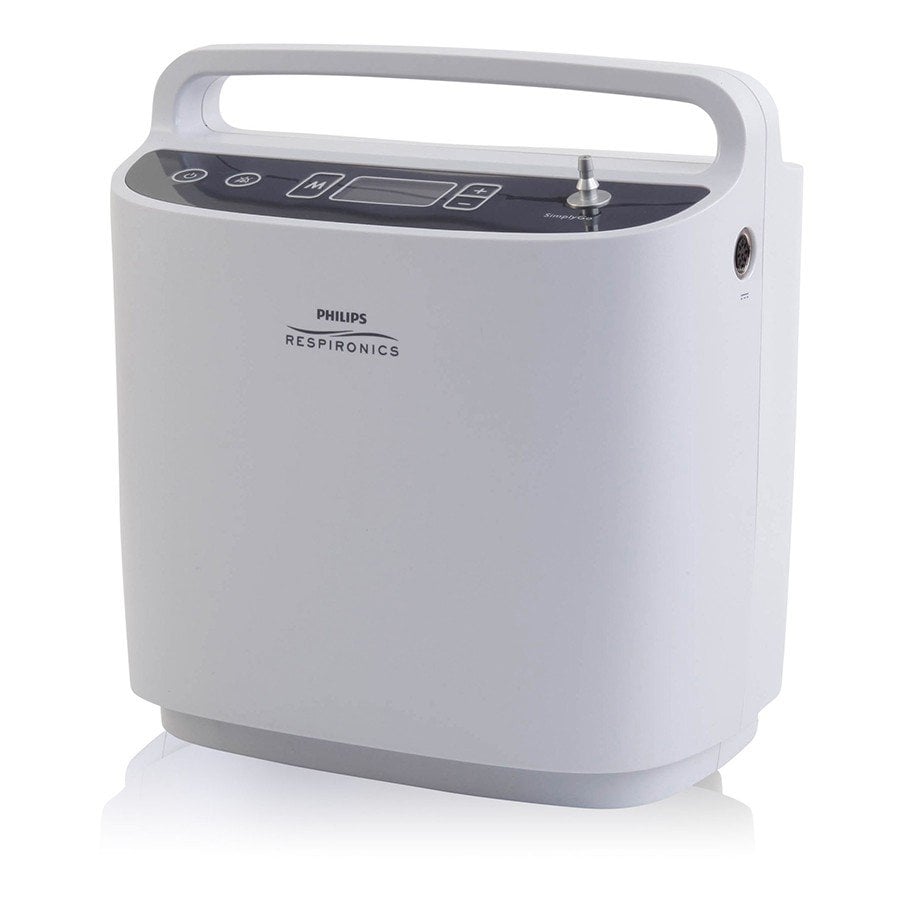
Despite how old the Respironics SImplyGo is, it’s still the smallest and the lightest continuous flow portable oxygen concentrator on the market. The dimensions of the SimplyGo are 10” H x 6” D x 11.5” W and it weighs in at only 10 pounds. In other words, it’s one of the only continuous flow devices that’s light enough and compact enough to carry comfortably on your shoulder. Regardless, every SimplyGo unit comes equipped with a rolling cart for your convenience.
Something you’ll likely notice right away about the Respironics SimplyGo is that it has a carrying handle built into the top of the unit. This is a simple design choice but it’s not offered with many other oxygen concentrators. This handle makes it much easier to pick the device up and move it around without having to grab it from the bottom or the sides where you risk dropping it.

The form factor is another thing that should be noted about the Respironics SImplyGo. Most continuous flow portable oxygen concentrators use the term “portable” very loosely in that they’re still about as bulky and awkward to maneuver as a standard oxygen tank. Most people find that they need help from loved ones in order to move their concentrator around safely. However, with the SimplyGo, you’ll have no problems on your own. The rolling cart has an adjustable handle making it easy to store whether you’re at home, in your car, or on an airplane.
Power and Versatility On The Go
One of the biggest problems oxygen manufacturers have faced is creating a small, lightweight oxygen device that also meets the needs of oxygen patients around the world. Every oxygen user is different, so it’s important to make oxygen machines that are versatile enough to satisfy everyone’s wants and needs. Luckily, the Respironics SimplyGo provides more versatility than most portable oxygen concentrators out there.

Firstly, the SimplyGo offers both continuous flow and pulse dose options. On continuous flow, you’ll have between 0.5 to 2.0 liters of oxygen per minute (LPM) and on pulse dose, you’ll have 6 flow settings to choose from. In other words, you’ll have a lot of different options for how you want your oxygen delivered. For example, if you’re at home with your concentrator plugged into the wall, you might want to use the continuous flow setting which consumes more battery life. However, when you leave the house and you’re trying to conserve battery life, you might choose to use the pulse dose setting.
Before you make any changes to your oxygen delivery, you should first contact your doctor. Everyone’s needs are different, so receiving too much or too little oxygen may be harmful to your health. Be sure to ask your doctor how many liters of oxygen per minute you need as well as how long you should be on oxygen each day. If you enjoy exercising, also ask him/her if it’s okay to increase your oxygen intake while exercising.
Another thing that makes the SimplyGo so versatile is the fact that it can operate using either one or two batteries. If you know that you’re only going to be out of the house for an hour or two you can simply take one battery with you as opposed to two. This will help you cut down the weight of your device and make your life a little easier. If you’re going on a long trip, add the other battery into your device and you’ll have twice as much battery life to work with.

Unlike other concentrators which have their battery packs on the bottom of the unit, the SimplyGo batteries slide out of the top of the unit. This makes it incredibly easy to swap out your batteries on the fly without having to flip the device over or lay it on its side. It’s also less of a hassle because you won’t have to take the device off of your shoulder when you do it.
Fully CPAP and BiPAP Compatible
Many people are unaware that you’re actually able to use your Respironics SimplyGo in conjunction with your positive airway pressure device (PAP device) as you sleep. PAP devices are used by people with obstructive sleep apnea (OSA) who have problems with their airways closing up as they sleep. This can be very dangerous when it’s combined with the side-effects of COPD and other respiratory conditions so you should speak with your doctor to see if you should use both CPAP and oxygen therapy while you sleep.
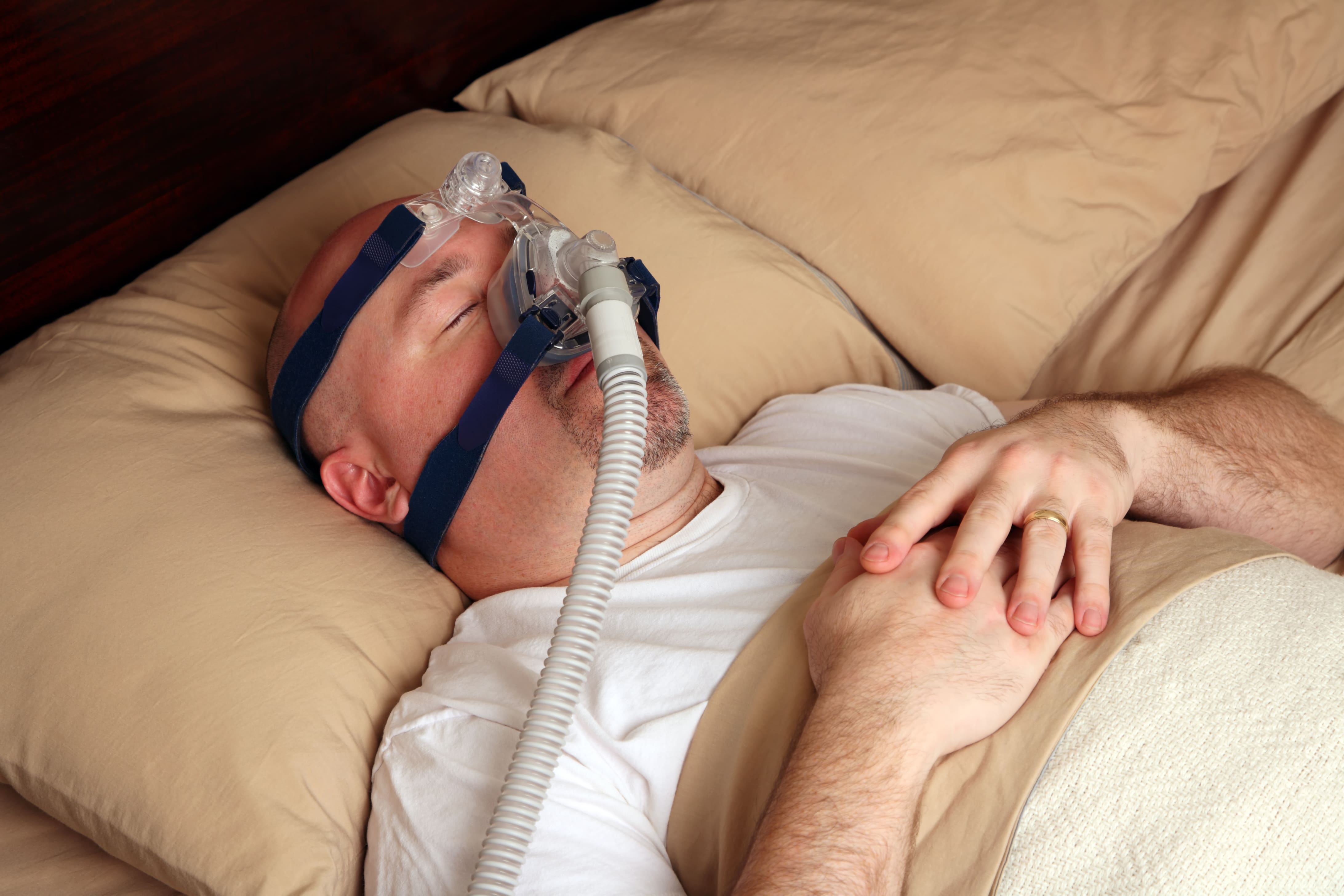
Unfortunately, pulse dose oxygen concentrators like the ResMed Mobi or the Activox 4L cannot be used with CPAP devices. This is because they rely on slight changes of pressure in the nasal cannula in order to determine when to deliver oxygen. The CPAP device can interfere with this, so you’ll need to use a continuous flow device like the Respironics SimplyGo. Since the SImplyGo has a pulse dose option, you’ll just want to make sure it’s set to continuous flow before you go to bed. For more information on setting up your SimplyGo with CPAP, be sure to consult the user manual.
Conclusion
There’s a reason we recommend the Respironics SimplyGo to oxygen patients time and time again. It’s the smallest and lightest continuous flow oxygen concentrator on the market and offers plenty of power and versatility that people expect in this day and age. With the SimplyGo, you’ll be able to regain the freedom that you once had before starting oxygen therapy and finally start enjoying activities outside of the house whether it’s taking a walk or taking a trip across the world.
{{cta('b59df0c1-c4de-47a8-8e1c-0d33d4b414aa','justifycenter')}}
While the Respironics SimplyGo is an incredible oxygen device, we want to get you the exact device that matches your wants and needs. If you’re shopping for a new, used, or refurbished oxygen concentrator, reach out to our concentrator specialists, and we will walk you through the whole process from choosing a concentrator to receiving your medical paperwork and even receiving financial compensation through Medicare or another health insurance company. Give us a call or shoot us an email today to get started!
Respironics SimplyGo Specs:
|
Weight |
10 Pounds |
|
Dimensions |
10” H x 11.5” W x 6” D |
|
Flow Rate |
Continuous Flow 0.5-2.0 LPM Pulse Flow Settings 1-5 |
|
Battery Life |
Continuous Flow Up To 0.9 Hours Pulse Flow Up To 3.0 Hours |
|
Power |
100-240 VAC, 50/60 Hz; 19 VDC |
|
FAA Approved |
Yes |
|
Warranty |
3 Years |
Respironics SimplyGo Battery Life:
| Flow Rate | Continuous Flow Battery Life | Pulse Flow Battery Life |
| 0.5 | Up to 2.9 Hours | N/A |
| 1 | Up to 1.6 Hours | Up to 3.4 Hours |
| 2 | Up to 0.9 Hours | Up to 3.0 Hours |
| 3 | N/A | Up to 2.2 Hours |
| 4 | N/A | Up to 1.7 Hours |
| 5 & 6 | N/A | Up to 1.3 Hours |
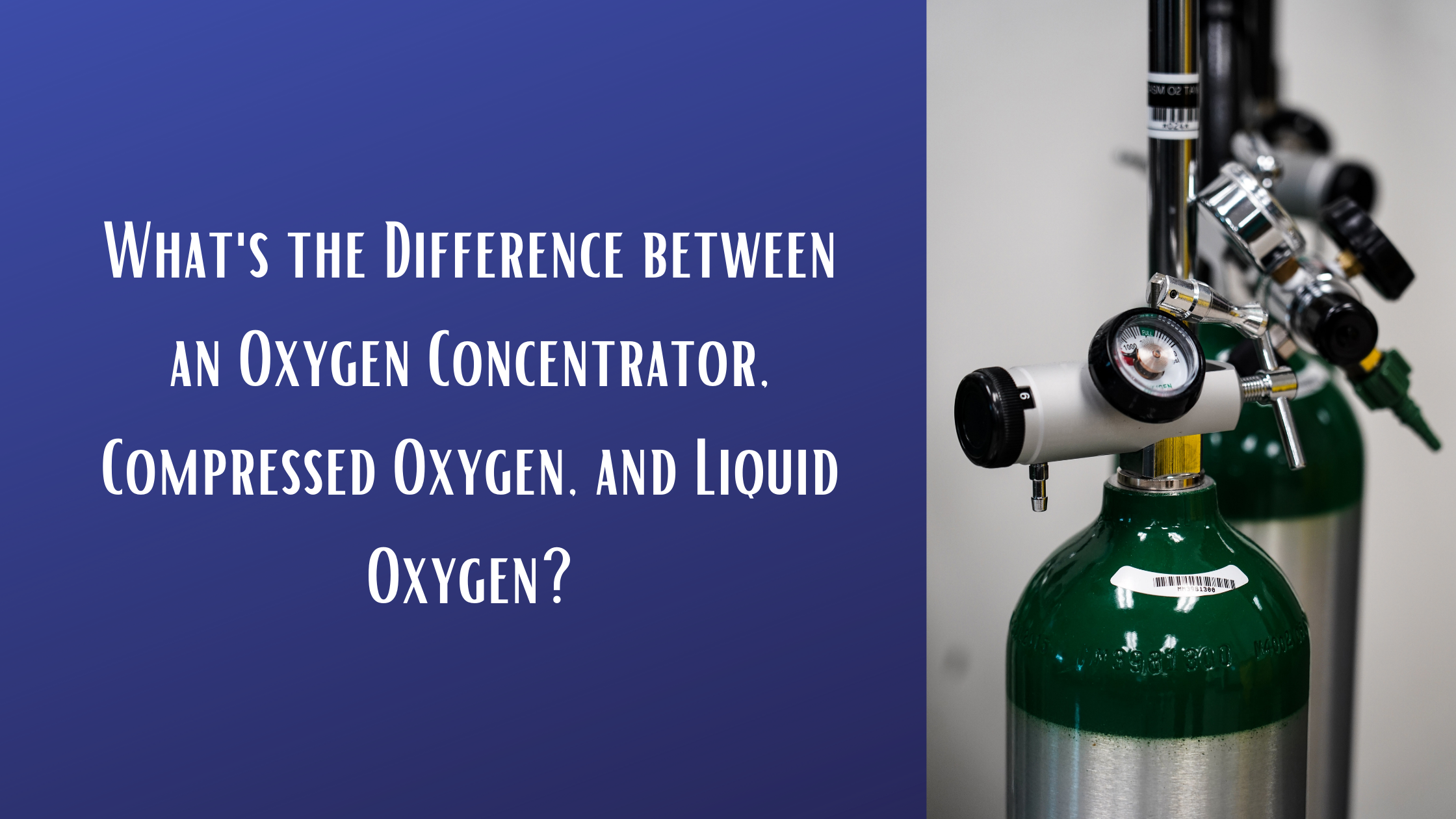
There are about 16 million people in the United States alone who have chronic obstructive pulmonary disease (COPD). This condition is characterized by slow but persistent lung function decline that leads to breathlessness, chest pain, and fatigue. Several lifestyle changes can significantly reduce the rate at which COPD progresses including an improved exercise routine, a refined diet, inhaled medications, and most importantly, oxygen therapy. Every case of COPD is different, however, so patients should consult with their doctor to learn which lifestyle changes will benefit them.
{{cta('fa8abc2a-1e88-4fa3-82fd-1cb5b9ed43b2','justifycenter')}}
When it comes to supplemental oxygen therapy, there tends to be a lot of confusion over the different devices that are available to COPD patients. Many people are told that they need medical oxygen, but they’re never provided with instruction on finding an oxygen device that meets their needs. In this post, we’ll discuss three different types of medical oxygen: compressed oxygen, liquid oxygen, and oxygen concentrators. You’ll learn the differences between them and you’ll receive some guidance for choosing one that fits your lifestyle.
If you still have questions after reading, be sure to reach out to our oxygen device specialists here at LPT Medical. We’ll walk you step-by-step through choosing an oxygen device, getting the best deal, and even helping you to receive the necessary medical paperwork. Give us a call at 1-888-416-3855 or email us at info@lptmedical.com.
What is Compressed Oxygen Gas?
Compressed oxygen gas refers to oxygen that has been stored within a tank or a cylinder. Oxygen has been stored in this way since 1868 and it’s still considered a viable method to this day; albeit, the technology has certainly evolved. Compressed oxygen gas is used for a variety of purposes, but it’s primarily used for industrial and medical settings. Many COPD patients use oxygen tanks on a daily basis to maintain the oxygen levels in their blood. For the most part, oxygen tanks are reliable for oxygen therapy, but there are some downsides that you should be aware of.
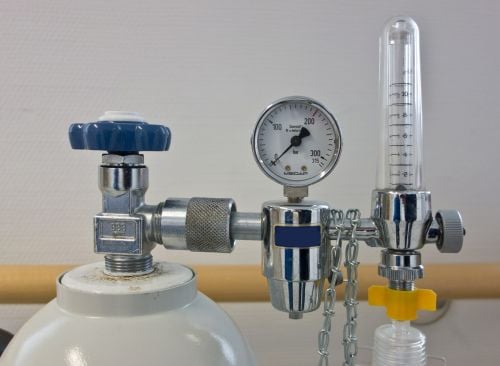
One of the most notable downsides of oxygen tanks is that they are heavy and bulky. Chances are, you’ve seen people carrying an oxygen tank around in public, and it’s not hard to see how much they struggle. Portable oxygen tanks can weigh as much as 20 pounds and they have a very oblong shape that makes them difficult to carry at your side or on your back. Most people choose to put their oxygen tank on a rolling cart but this comes with problems of its own. They take up a lot of space and they’re difficult to maneuver around obstacles or up a flight of stairs. Home oxygen tanks can weigh well over 100 pounds meaning you will need professional help just to move one.
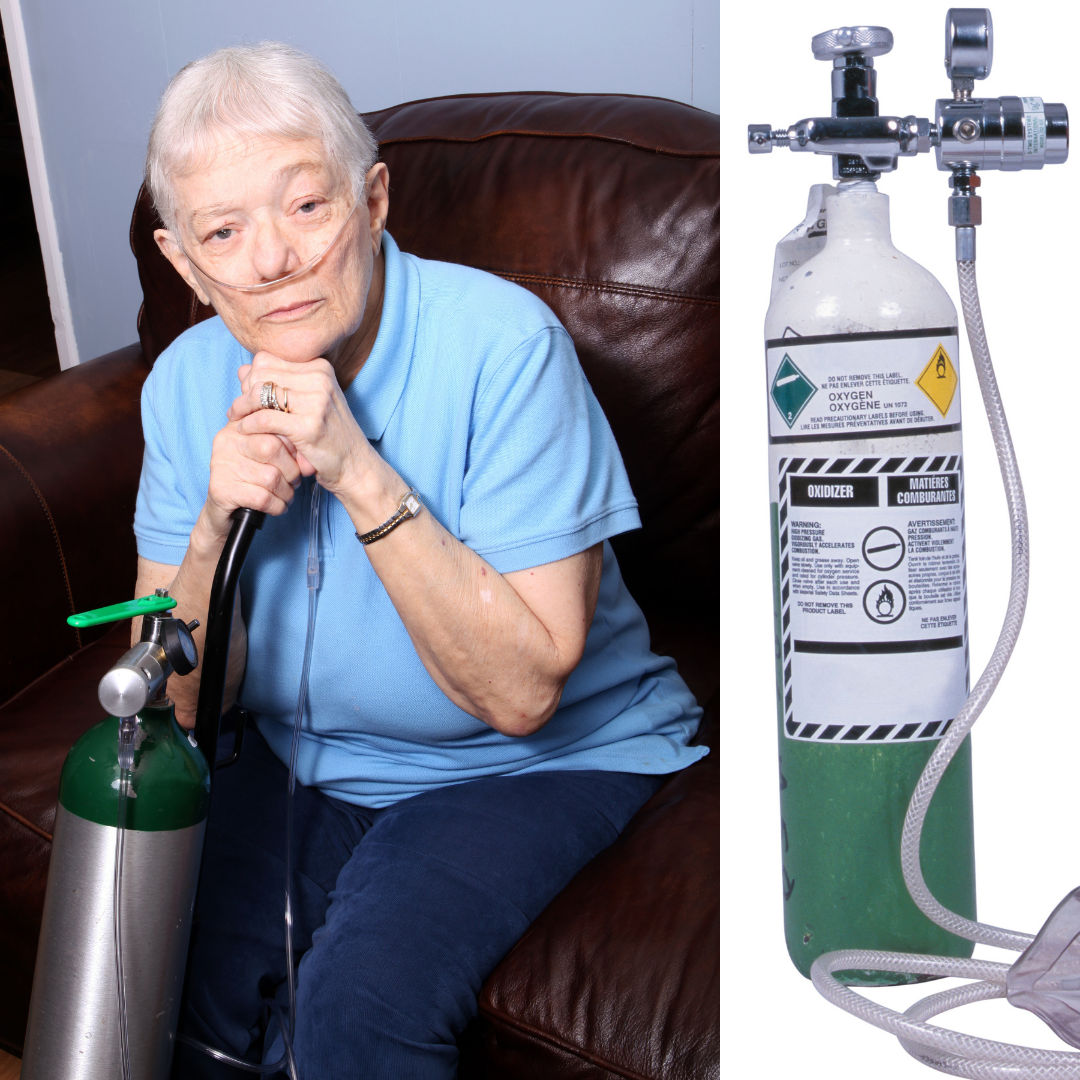
Another glaring problem with oxygen tanks is that they need to be refilled constantly. For example, an “E” tank that is about 3 feet tall and weighs 8 pounds will only last 5 hours if it’s used continuously. At this point, you are going to either have to run home and use your home fill station or find a dependable oxygen company that can refill or replace your oxygen tank for you. All of this takes time and money, all while distracting you from what you care about most. It’s important to remember that the only way to extend the duration of your oxygen supply is to carry a bigger and bulkier oxygen tank or purchase a device called an oxygen conserver.
What is Liquid Oxygen?
Liquid oxygen is similar to compressed oxygen in that the oxygen is stored in a tank. The difference is that these devices store the oxygen in its liquid state rather than as a gas. This is preferable over compressed oxygen because once oxygen enters its gaseous state it expands and thus takes up more space. Liquid oxygen canisters tend to be much smaller and lighter than compressed oxygen and they last longer without needing to be refilled. There are some downsides to these units, however, so let’s take a look.

Likely the first thing you’ll notice about liquid oxygen devices is that they are more expensive than traditional oxygen tanks. This is because — in order for oxygen to be stored in a liquid state — it needs to be kept at very low temperatures. And in order to do that, you need a special type of storage container. Liquid oxygen cylinders work like a thermos in that they keep the liquid oxygen at around -297 degrees Fahrenheit. For safety reasons, liquid oxygen cylinders have decompression vents that release oxygen as the unit warms up. This means you should use it right after filling it up to ensure no oxygen is lost.

One of the problems many people encounter with liquid oxygen is that it’s extremely difficult and expensive to refill. You’ll need to either have a special home fill reservoir or you’ll need to outsource to an oxygen company. Even then, you may be hard-pressed to find a company that is able to fill a liquid oxygen device. While liquid oxygen tanks provide many benefits over traditional oxygen tanks, they aren’t as popular simply due to the high barrier of entry.
What is an Oxygen Concentrator?
The third and final oxygen device we’ll discuss is oxygen concentrators. Unlike traditional and liquid oxygen tanks which hold oxygen inside the unit, oxygen concentrators draw in ambient air, remove gases like nitrogen and argon, and output medical-grade oxygen. Another thing that sets concentrators apart is that they are electronic devices. What this means is that they need a reliable source of energy in order to operate. There are three different types of oxygen concentrators so we’ll break each one down.
Stationary Oxygen Concentrators
Also called home oxygen concentrators, stationary oxygen concentrators need a constant source of power in order to operate. The unfortunate downside to this is that you won’t be able to leave the house without there being an interruption in your oxygen delivery. On the other hand, you can still use things like extension cords or extra long nasal cannulas in order to move around the room freely. Despite the name “stationary,” most of these oxygen devices have wheels on the bottom that make them easier to move around the house. However, they tend to weigh a lot (usually upwards of 30 pounds).
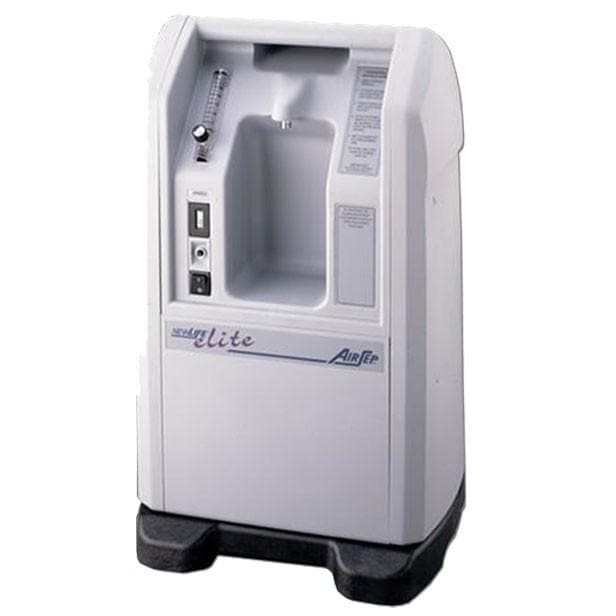
One of the main reasons stationary oxygen concentrators are still in use today is because of their high oxygen output. Some concentrators like the NewLife Intensity 10 can put out up to 10 LPM (liters per minute) of oxygen which is enough for people with severe COPD. They’re also extremely reliable and they can run 24 hours a day and 7 days a week without a problem. Stationary concentrators are not ideal for people who want to get out and about but they’re a good choice for people who stay around the house.
Continuous Flow Portable Oxygen Concentrators
A portable oxygen concentrator works the same way as a stationary oxygen concentrator, but instead of being plugged into a wall outlet 24/7, POCs run off of rechargeable batteries. Most POCs use lithium-ion batteries which are some of the most powerful and reliable batteries in use today. You can find them inside cellphones, laptops, and other electronic devices. The term “continuous flow” refers to the way that oxygen is administered to the patient. It simply means that the oxygen is being released in a constant stream regardless of your breathing rate.
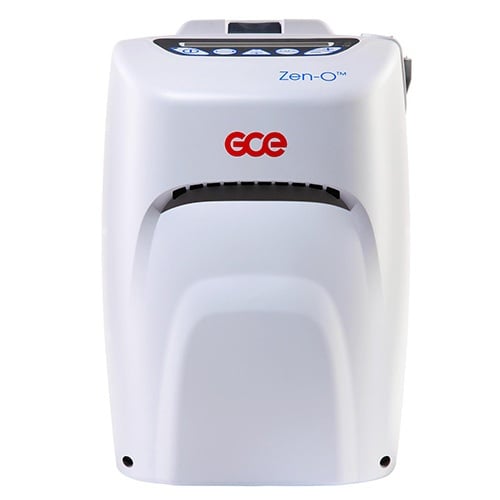
As you can imagine, there are several disadvantages to this. Since the device is working around the clock to administer oxygen, your battery life is going to suffer. Most continuous flow concentrators will only run for a couple of hours before the batteries need to be recharged or replaced. This can really be problematic if you want to get out of the house for an extended period of time in order to visit a friend or take a vacation.

Since continuous flow units are so bulky, taking your oxygen device into public areas or walking up long flights of stairs is out of the question. Unless you’re able to carry the machine on your back, the nasal cannula will dangle down quite a bit which can be a tripping hazard for you and others. To mitigate this risk, some people resort to using mobility aids that they can rest the device on while walking. This way, there’s no chance that the oxygen tubing will get caught on anything. The obvious downside of this is that you’ll have yet another thing to keep track of as you’re out and about.
Pulse Dose Portable Oxygen Concentrators
The final type of oxygen concentrator is a pulse dose portable oxygen concentrator. The term “pulse dose” refers to the way that oxygen is administered to the patient. Rather than being released in a constant stream, the device closely monitors your breathing rate and only delivers oxygen at the optimal moment. What this means is that no oxygen is wasted and you’ll have a lot more battery life to work with. Another major benefit of this technology is that it enables manufacturers to make their devices much lighter and smaller.

The Caire FreeStyle Comfort is one of the top pulse dose portable oxygen concentrators currently on the market. It weighs in at just 5 pounds and the 16-cell battery lasts up to 8 hours on a setting of 2. It also has a maximum oxygen output of 1,050 ml/min which is more than enough for the vast majority of oxygen patients. The great thing about the FreeStyle Comfort and most other pulse dose POCs is that it’s approved by the Federal Aviation Administration (FAA) meaning you’ll be able to take it on any commercial airline with you.
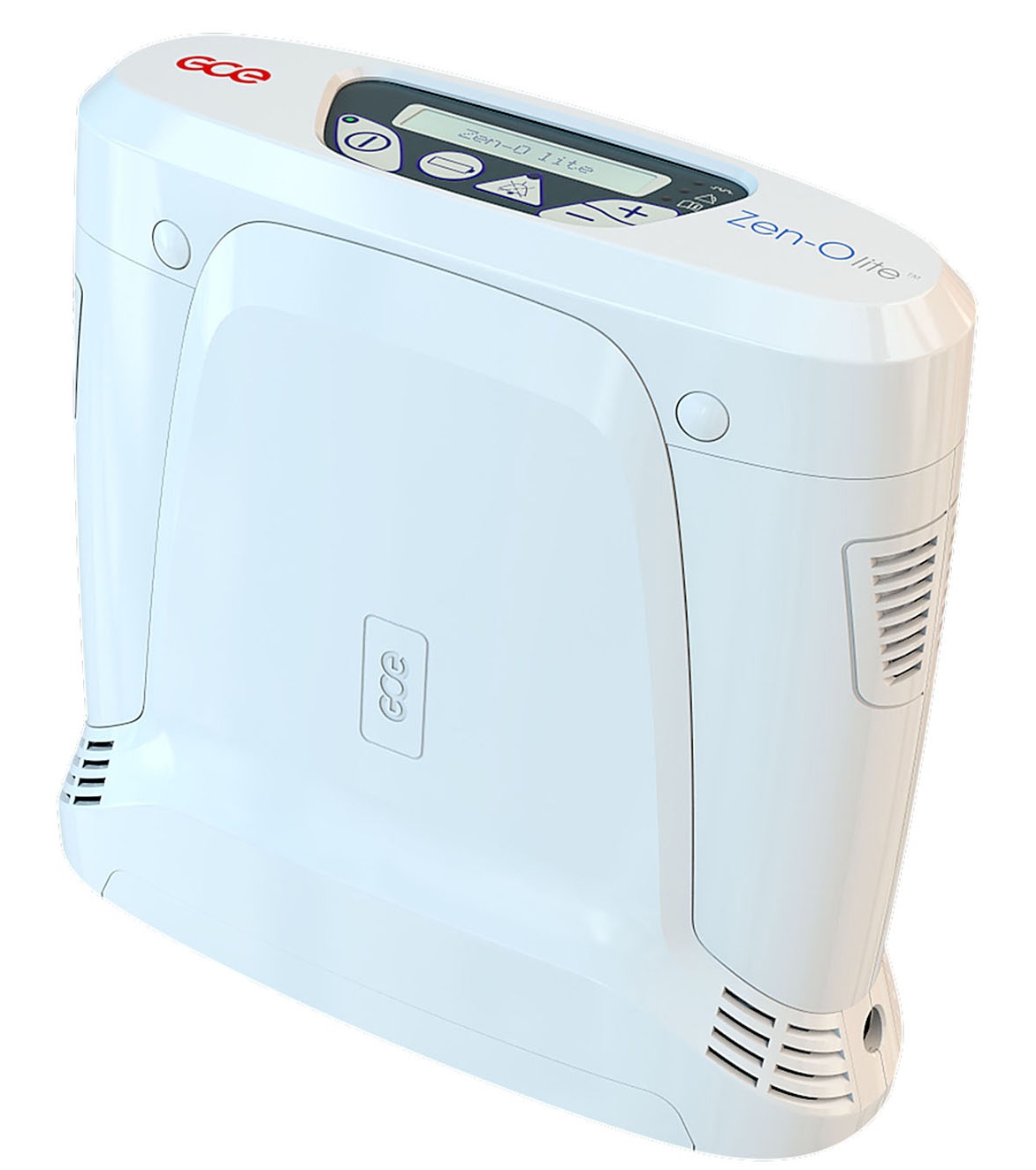
Ultimately, using a pulse dose portable oxygen concentrator as opposed to one of the other oxygen devices listed above, you’ll have more freedom to go where you please and spend more time doing the things you love. They’re very simple to use straight out of the box so you don’t have to worry about spending hours reading through the user manual or researching online. There is also a wide range of accessories available for them in order to help you customize and make the most of your new device.
Conclusion
In this post, we took a look at three of the main oxygen devices on the market: oxygen tanks, liquid oxygen tanks, and oxygen concentrators. Each of these devices is widely used by oxygen patients across the world and they are each viable in their own way. However, all things considered, pulse dose portable oxygen concentrators provide some pretty distinct advantages over the other options. Most importantly, they’re extremely lightweight meaning you can take them anywhere in the world with comfort and ease.
{{cta('b59df0c1-c4de-47a8-8e1c-0d33d4b414aa','justifycenter')}}
The GCE Zen-O Lite, for example, is a pulse dose portable oxygen concentrator that weighs in at just 5.5 pounds. With both batteries inserted into the device, you’ll get up to 8 hours of battery life on one charge! That’s enough to last you the whole day and then some. It’s also one of the most powerful pulse dose units offering up to 1,050 ml/min (milliliters per minute ) of oxygen on one charge.
There are many incredible pulse dose concentrators on the market, so be sure to contact our respiratory specialists to discover which one is best for you. We’ll walk you through the whole process from choosing a device to choosing a buying option. We’ll even help you collect all the necessary paperwork and assist you with being reimbursed through Medicare or another health insurance company. Give us a call at 1-(800)-946-1201 or email us at info@lptmedical.com to get started.


 So we can find the best portable oxygen concentrator for your needs!
So we can find the best portable oxygen concentrator for your needs!













